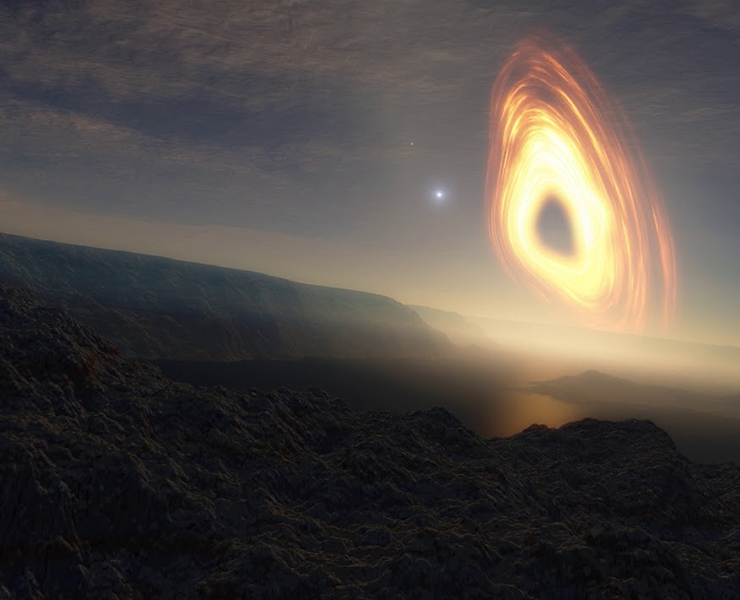The contribution of x-rays was not limited to medical aspects, but scientists also used them to probe the structures of particles and microscopic particles, and the more intense the X-rays used in the experiment, the more accurate the image obtained by the experimenter.
According to a new study, large atoms in some molecules behave in a strange way when they are shone with radiation from the most powerful x-ray laser in the world, as they look like a small black hole that swallows all the electrons of the surrounding particles.
This study not only allows adding valuable information about the universe around us, but it may also help us to better understand what is much closer to us than that. As a better analysis of viruses, bacteria and small complex structures on Earth.
Scientists from Kansas State University used the most intense x-ray lasers in the world, called the LCLS, at the SLAC National Accelerator Laboratory, a device capable of generating laser pulses within a square centimeter of a hundred quintillion-watt area. One (a quintillion watts = a billion billion watts), equivalent to an intensity of up to a hundred times the intensity of all the sun rays striking the Earth’s surface concentrated within an area of a square centimeter, according to the assistant researcher Sebastien Boutet.
Scientists fired sequential laser pulses, each pulse with a duration of 30 femtoseconds (femtosecond = one million billionth of a second) into a narrow beam of particles flowing through a vacuum tube. Each of these pulses of lasers collides with only one particle on average, smashing it into scattered pieces, and then the process is repeated several hundreds of thousands of times. The researchers say these pulses are the largest in the history of experiments with probing molecules.
(The power is the energy released divided by the time it was emitted)
Scientists have tested two types of known molecules in biological processes: methane and iodo-benzene, which are both composed of carbon, hydrogen and iodine. Iodine atoms are heavier than carbon and hydrogen atoms, and have many more electrons than both hydrogen and carbon atoms. Heavy elements like these are present in the biological molecules that scientists want to study. For example, people use iodine to form thyroid hormones, so scientists want to know more about such atoms.
Both carbon and hydrogen are transparent to the x-rays used. Meaning that it does not absorb any of them, so iodine absorbed these intense pulses. Scientists expected, based on previous studies, that the laser pulses would strip the electrons of the deep layers of the iodine atom, so that only the electrons that were firmly bound to its nucleus were left for the iodine atom. The iodine atom turned into a positive ion and began to extract the negative electrons from the surrounding carbon and hydrogen atoms, until it swallowed all the electrons that it was able to obtain from the neighboring atoms, and the black hole swallows the material from its surroundings, but unlike the black hole, the material from its surroundings, but unlike the black hole, swallows the material out of its surroundings. Soak up a new batch of pulses.
This new discovery will help scientists to properly plan and interpret experiments related to LCLS, as well as experiments related to large-capacity X-ray lasers; Like the European “XFEL” laser. The results of the research show that when interpreting the X-ray data: Especially the biomolecular imaging data, attention must be paid to regions that contain heavy atoms, such as metallic clusters in proteins, as all current simulations of the effect of radiation in destroying cells treat all atoms in a relatively equal manner.
Future research will explore how electrons move around more massive molecules, gradually reaching molecules such as proteins.The research will add an analysis of how electrons flow within a molecule exposed to x-rays, in a leap forward for the development of fast bombardment lasers.
Whereas the LCLS laser fires a hundred and twenty pulses per second, the European XFEL laser will bomb twenty-seven thousand pulses per second when it starts operating next October. The expected big jump for the “LCLS 2” laser will be around the year 2020, when it fires a million pulses per second.




